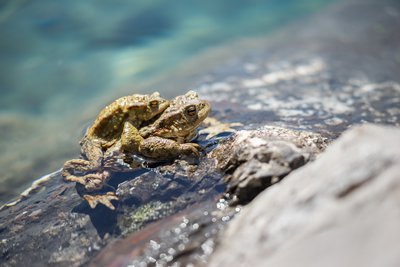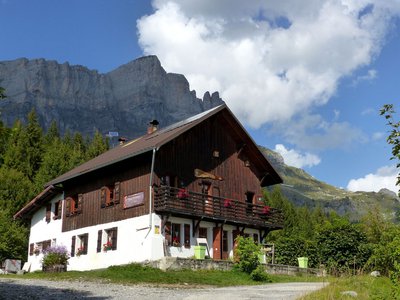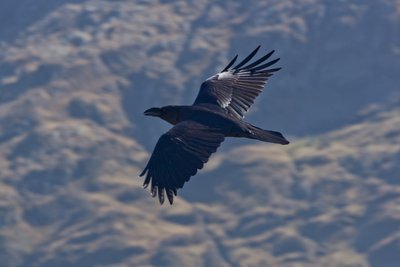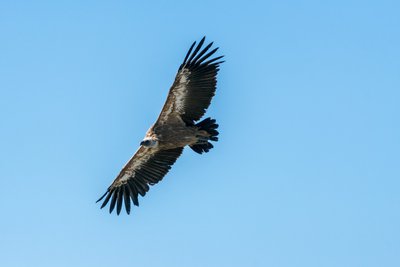Small tour of Ayeres

Passy
Small tour of Ayeres
Very easy
2h30
6,3km
+352m
-351m
Embed this item to access it offline
An ideal trail for the whole family, it features forests, a mysterious little lake, Lac Vert, mountain pastures and alpine chalets. Not to mention some of the best views of Mont Blanc!
Attachment
- Downloadpdf
le-petit-tour-des-ayeres
Credit: Points d'intérêts du parcours - Asters-CEN74
15 points of interest

Panorama Mont Blanc - Julien Heuret - CEN 74  Geology
GeologyThe mont Blanc
Under the snow and glaciers, two major rocks form the Mont-Blanc Massif: the sharp edges and highest peaks are made of very hard granite (from left to right: Chamonix Needles, including the Aiguille du Midi, Mont Blanc du Tacul, Mont Maudit, Mont Blanc summit), while the rounder, softer parts are made of gneiss (from left to right: Dôme du Goûter, Aiguille du Goûter, Aiguille de Bionnassay....). These two so-called crystalline rocks come from the Earth's molten core.
Le Mont-Blanc depuis une prairie fleurie de Plaine-Joux - Lucie Rousselot - CEN 74 
History of Plaine-Joux
From woodland to mountain pasture, Plaine-Joux has not always been a ski resort. Its very name, which means "forest on a flat landscape", bears witness to this. As early as the 1930s, the residents of Passy were enjoying skiing on this site blessed with an exceptional panoramic view. It was around 1965 that it officially became a municipal ski resort. Today, Plaine-Joux remains a popular family resort for skiing, hiking, paragliding... or just admiring the scenery.
@JLFouquer  Fauna
FaunaThe Common Minnow and the Common Chub
The minnow is very common in highly oxygenated waters. The reason for its presence in high-altitude lakes is that trout fishing is common there. It is used as bait by anglers, which has enabled this species to spread to mountain lakes. The chub is a fairly large fish, widespread in France. It is an omnivore, meaning it eats everything. In many European countries, particularly in Eastern Europe, it is a major culinary delicacy.
Amplexus crapaud - Julien Heuret - CEN 74  Fauna
FaunaThe common Toad
Kissing a toad and turning it into Prince Charming is a myth! You should never touch this protected species, which is vulnerable to the many diseases that humans can transmit to it. Instead, look into its eyes to see its horizontal pupil and orange iris. You can also see its parotoid glands at the back of its head. These are used to excrete a venom called "bufotoxin" to ward off any predators. The toad is a completely different species from the frog, living for the most part in the forest, out of the water, and only coming back to the water during the breeding season!
@NicolasPerrouchet  Fauna
FaunaThe Grass Snake
A semi-aquatic species, it is found mainly in wetlands, but also in drier areas where it is able to prey on amphibians (frogs, toads, salamanders and newts). Like all reptiles, it is a protected species! It can be recognised by its round pupils, its olive-grey skin and its double black and white or yellow neck. Its other distinctive feature: when it feels to be in danger, it spits out a foul-smelling liquid and then plays dead, revealing its two-coloured belly in the pattern of a piano keyboard!
Julien Heuret - CEN 74  Fauna
FaunaDragonflies
Odonates, more commonly known as dragonflies, belong to the insect family. They undergo two stages in their lives: a "larval" phase, which is aquatic, followed by a terrestrial phase, which marks adulthood. Dragonflies are predators: they are carnivores, feeding on different types of prey depending on their life stage. They also prey on other insects. Their habitat is strongly influenced by climatic conditions, and any change will have a major impact on their numbers. The destruction of their habitat, wetlands, is one of the main threats to dragonflies.
Refuge le Châtelet d'Ayères - Lucie Rousselot - CEN 74  Refuge
RefugeThe mountain refuge of Châtelet d'Ayères
Charming Châtelet d'Ayères mountain refuge lies nestled in a picturesque landscape with breathtaking views over Mont Blanc. Built 100 years ago and now run by a local family from Passy, it was home to some of the great names in mountaineering in the 1950s, including Roger Frison-Roche and Maurice Herzog. Its renowned cuisine attracts gourmets who enjoy the taste blueberry tart and the famous "farcement", a cult local delicacy. The restaurant is entirely solar-powered. Enjoy in moderation!
Perdrix bartavelle - Bertrand Muffat-Joly - OFB  Fauna
FaunaThe Rock Partridge
According to Marcel Pagnol, The Rock Partridge is the queen of the partridges, as mentioned in his book "My father’s glory"! However, far from the mediterranean hinterland, it thrives in open and rocky mountain environments between 1000m and 3000m of altitude all over south-eastern Europe, from the Alps to the Balkans! It is the largest of the partridges. What's interesting though, is that both roosters and hens look alike: red legs and beak and a white neck lined with a well-designed black collar. These birds are social creatures: they prefer to flock together, except during the breeding season.
Gélinotte des bois - Julien Heuret - CEN 74  Fauna
FaunaThe Hazel Grouse
This is the smallest and most elusive of the mountain Galliformes species. It is much less well known than the black grouse or the rock ptarmigan because it lives exclusively in the forest! But it is just as important from a biological and scientific point of view: this species is an excellent indicator of environmental change. Its specific requirements in terms of vegetation and variety of tree species put it at risk in the face of poor forest management. This is one of the main causes of the species' decline.
Pic noir  Fauna
FaunaThe Black Woodpecker
It is the largest of the 8 woodpecker species found in France. Originally an exclusively mountain-dwelling species, it now can also be found in the valleys! The Black Woodpecker adapts equally well to deciduous and coniferous forests, as long as they are large enough and have large-diameter old trees and some dead wood left. It is easily recognised by its entirely black plumage enlivened by a bright red spot, limited to the nape on the females and more extensive on the males.
Aigle royal en vol - Julien Heuret - CEN 74  Fauna
FaunaThe Golden Eagle
It's a predator, armed for the hunt! Thanks to its large, wide wings, it glides high into the sky in search of prey. Its exceptional eyesight spots marmots (its favourite meal), hares, foxes or ptarmigan, and sometimes even young chamois or ibex! Its prominent eyebrow arch acts as a sun shield when it swoops down to snatch its prey. It is equipped with talons for grabbing and a powerful, hooked sharp beak for tearing flesh.
Grand corbeau en vol - Julien Heuret - CEN 74  Fauna
FaunaThe Common Raven
It is the largest of the passerines and corvids! Whether feared or revered, it is the subject of myths and legends in many cultures. Once hated and hunted, it is now protected. About the size of a buzzard, it can be recognised by its diamond-shaped tail and its throaty screech. It is an omnivore, which means it feeds on carcasses, eggs, chicks and berries! The couples, bound together for life, perform high-flying courtship displays! Apart from humans, its only predator is the golden eagle.
Vautour fauve en vol - Julien Heuret - CEN 74  Fauna
FaunaThe Griffon Vulture
It is a frequent summer visitor to Haute-Savoie. The species is monogamous, in other words couples stay together for life! This bird lives in colonies of relatively big colonies, the nearest of which are in the southern Vercors. It is mainly the young individuals that explore new territories. To feed, this bird is also capable of covering hundreds of kilometres by gliding, provided the weather conditions are favourable.
Panorama sur le Mont-Blanc depuis Plaine-Joux - Lucie Rousselot - CEN 74  Peak
PeakThe mont Blanc before the rise of mountaineering
A lot of mountaineers have dreamt of climbing Mont Blanc, the highest peak in Western Europe. But this has not always been the case. In the past, the mountains instilled fear and superstition in their local inhabitants, as evidenced by the names given to the summits ("cursed mountain", "devil's spikes"...). Only shepherds, chamois hunters and stonemasons (extractors of rock crystals) frequented these hostile areas. The first ascents were made by daring foreigners who hired these experienced mountaineers to provide guidance.
Le Dérochoir à l'automne - Julien Heuret - CEN 74 
Overlooking the Dérochoir
The Dérochoir is the product of a series of landslides. The first known and documented landslide dates back to 1471. The second and last, for the time being, was in 1751. At the foot of the cliff is a huge landslide cone that forms an unsteady slope. These landslides made it possible to cross the Barre des Fiz.
Description
Depart from in front of the Maison de la Réserve naturelle de Passy. Take the paved road towards Lac Vert. Turn right onto the path towards Lac Vert. Between the tree cabins. Head towards Lac Vert. Turn right onto the paved road towards Lac Vert. Marker 93. Take the trail towards the Châtelet d'Ayères refuge. Marker 159. Stay on the trail towards the Châtelet d'Ayères refuge. Marker 160. Turn right, staying on the track towards the Châtelet d'Ayères refuge. Marker 95. At the Châtelet d'Ayères refuge, turn left towards Les Mollays. Marker 143. Turn left, staying on the trail towards Les Mollays. Marker 96. Go straight through the hamlet of Les Mollays. Turn left on the trail towards Plaine-Joux. Marker 16. Go straight ahead on the trail towards Plaine-Joux. Stay on the trail towards Plaine-Joux. Marker 103. Take the paved road towards the Maison d'accueil de la Réserve naturelle de Passy. Marker 102.
- Departure : Maison de la Réserve naturelle de Passy
- Arrival : Maison de la Réserve naturelle de Passy
- Towns crossed : Passy
Altimetric profile
Recommandations
Always exercise caution and plan ahead when hiking. Asters, CEN 74 cannot be held responsible for any accident or incident that may occur on this trail.
Transport
Bus SAT Mont-Blanc L85
Access and parking
Get to the Passy-Plaine Joux resort by taking the D43 road. Car park at the entrance to the resort. Bus line L85 (SAT Mont-Blanc).
Parking :
Plaine Joux
Report a problem or an error
If you have found an error on this page or if you have noticed any problems during your hike, please report them to us here:

